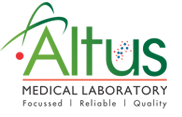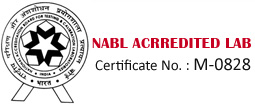S. GALACTOMANNAN ANTIGEN ASP. GALACATAMANNAN GALACTOMANNAN
Home /
Aspergillus Galactomannan Antigen by EIA, Serum test in Chandigarh
Method: EIA
Test Method(s)
GALACTOMANNAN-Notes:
1. If a negative Galactomannan result is obtained in cases with strong clinical suspicion of invasive aspergillosis, repeat testing twice a week is recommended.
2. Reduced test sensitivity may be encountered in patients with chronic granulomatous disease, Job’s syndrome and in patient on mold-active anti-fungal therapy.
3. Other fungi (Penicillium, Alternaria, Paecilomyces, Geotrichum and Histoplasma) may show occasional assay cross reactivity.
4. Positive reactions with no clinical signs: Considering the early detection of the galactomannan antigen in serum even before appearance of clinical and/or radiological features, positive reactions without clinical signs may be observed. These correspond to “true positive” tests in patients, for whom proven or probable Invasive Aspergillosis diagnosis is established later on.However, below factors should be taken into account when interpreting the test:
a) Positive reactions with no clinical signs have been reported, especially in young children. Only some of these cases could be related to real circulation of Aspergillus antigens. Galactofuranose has been demonstrated in various foods, particularly cereals, cereal products and cream desserts. Unlike human milk, humanized milks frequently contain high concentrations of galactomannan. Hence, dietary factor must be taken into account for interpreting the course of antigenemia in young children, and in all patients with an altered intestinal barrier.
b) Positive galactomannan test results have been observed in patients receiving piperacillin / tazobactam, amoxicillin / clavulanic acid. Hence, positive results in these patients should be interpreted cautiously and confirmed by other diagnostic methods
Cautions ?
False-positive results are reported to occur at rates of 8% to 14% with this assay. For all positive patients, it is recommended that a new aliquot of the same specimen be repeated, as well as collection of a new specimen from the patient for follow-up testing. Two or more consecutive positive results should be obtained from separately drawn specimens before the patient is considered to have a positive Aspergillus antigen test.
Kindly Correlate Clinically



